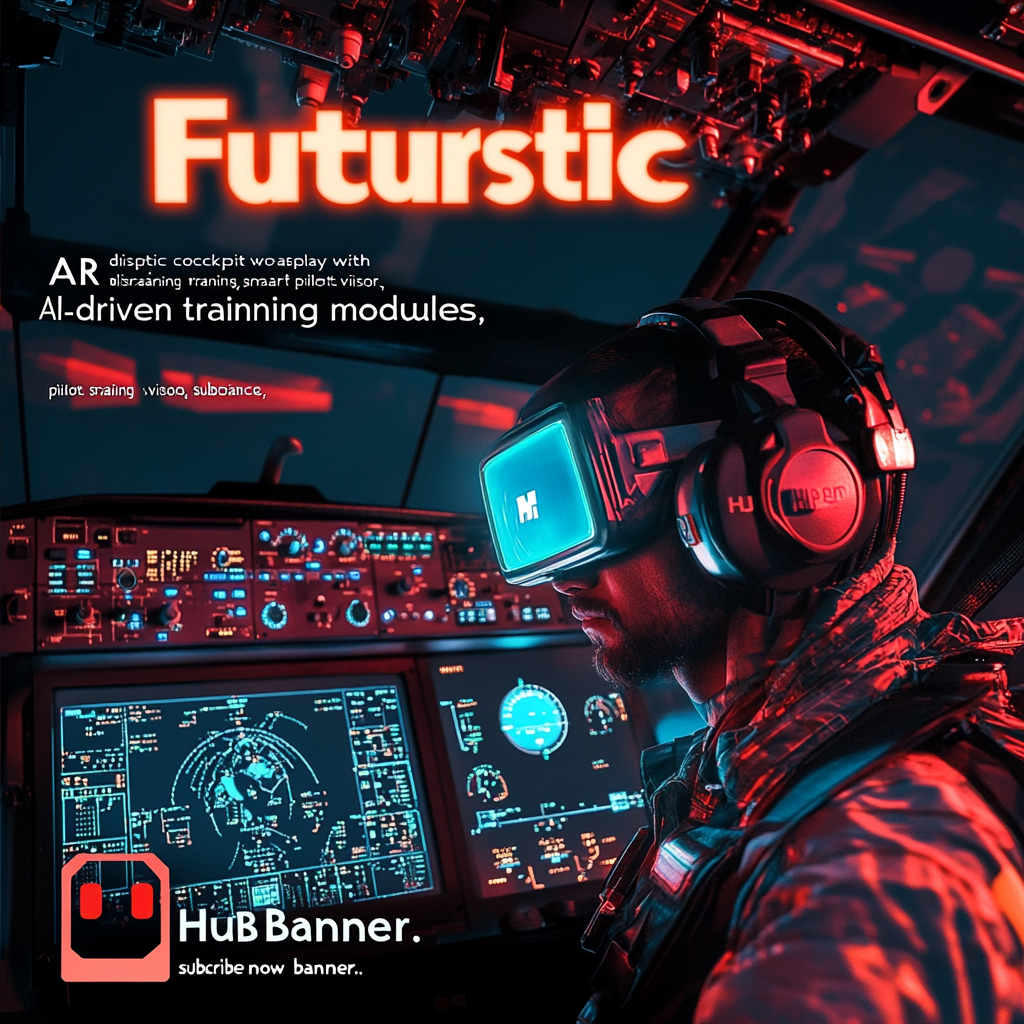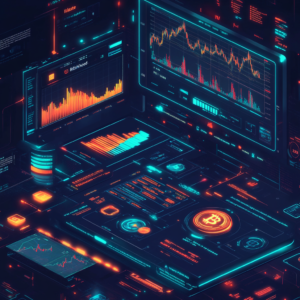
Augmented Reality Tool Enhances Pilot Performance and Mental Workload Analysis
In the vast open skies of aviation, a revolution is brewing, but it’s not just your usual pilot training regimen aimed at making high-flying warriors of the clouds. No, we’re venturing into the realm of technology—a bold leap fueled by augmented reality (AR) and the brainy wonders of artificial intelligence (AI). This tandem isn’t simply a gimmick; it’s a firm step towards reshaping how we mold our pilots, pushing the boundaries of performance and efficiency in ways that were previously only limited to our daydreams.
Let me throw a spotlight on an intriguing gem that has just landed on this aviation runway: HuBar. Developed by the wizards over at NYU Tandon, HuBar is not your grandmother's visual analytics tool. It's an innovation of the highest order—an AR-based training maestro that talks pilot performance and mental load like they’ve been best friends for years. The days of rote learning are numbered, as HuBar steps forward to usher in an era where pilots will be primed for the unpredictable whims of aircraft operation.
So, how does this technological dollop of genius actually work? Picture an immersive training session where pilots don an AR headset, stepping into a world where virtual merges harmoniously with reality. This tool breaks down performance metrics like a seasoned chef chopping vegetables. Expect nothing less than:
-
Real-Time Feedback: Think of it as your personal coach whispering sweet nothings—or rather, vital corrections—into your ear as you clamber through a flight scenario. Instant tweaks mean instant improvement.
-
Mental Workload Analysis: HuBar doesn't stop at merely analyzing your achievements; it digs deep into what’s cooking in the mental kitchen. By monitoring eye movements, heart rates, and other physiological nuances, it dishes out a glimpse into complete mental bandwidth during training. Yes, folks, peace of mind is just as important as maneuvering those dials.
-
Comparative Analysis: No two sessions are alike, but HuBar helps instructors create a crystal-clear comparison between training sessions, pinpointing both triumphs and shortcomings. Tracking progress has never felt so good.
- Customizable Scenarios: Picture this: A sunset flight over an imaginary metropolis, or a stormy landing on a makeshift runway—it's all within reach, thanks to HuBar's ability to conjure up a world of varied challenges for trainees.
Now, let’s not gloss over the sparkling jewel that is augmented reality. It’s the real game-changer here, transforming a basic flight training into a symphony of learning opportunities.
Here’s the witty scoop:
-
Reduced Learning Time: Research shows that throwing AR into the mix slices down learning timelines drastically. Trainees receive immediate nudges and cues, mastering the finesse of aviation quicker than ever imagined. Why take three weeks when you could do it in three days, right?
-
Lower Cognitive Workload: Imagine floating through a training exercise without the burden of excessive cognitive load, where prompts float in your field of vision like helpful little fairies. With less strain on memory, your focus can laser-target the task at hand.
-
Improved Performance: Who doesn’t like a killer performance? Fewer fumbles and a smoother operation become a delightful reality when AR leads the way, guiding pilots as if holding them by the hand through every twist and turn.
But what about AI? Oh, the glorious, cheeky brain behind HuBar's marvel. The smart integration of AI and analytics is where things get astoundingly cool.
Here’s a peek at how it outshines traditional training methods:
-
Motion Capture and Tracking: HuBar is all about real-time movement tracking, capturing every eye flicker and joystick wiggle. The data generated is analyzed to sprinkle important insights that aptly reveal performance highs and lows.
-
AI-Driven Insights: With an analytical brain fueled by AI, HuBar sifts through mountains of data, revealing patterns and predicting performance trajectories. Talk about getting a personalized touch—AI doesn’t sugarcoat; it delivers reality, which is just what aspiring pilots need.
Let’s not let this delightful train slow down because there’s a parallel development brewing in the science pot—an equally fascinating project from the University of Virginia. Meet the Semantic and Motion-Aware Spatiotemporal Transformer Network (SMAST). If you think modern human action detection is shaking things up, SMAST promises to take it to a whole new altitude. This is no ordinary tech; it’s a masterful video analyzer capable of detecting intricate actions in real time, lifting the standard of precision to dizzying heights.
Consider what SMAST brings to the table:
-
Multi-Feature Selective Attention Model: This might just be the pièce de résistance. SMAST focuses keenly on critical components of a scene while waving off the unnecessary fluff, driving accuracy to levels beyond average perception.
-
Motion-Aware 2D Positional Encoding Algorithm: Ah, fancy jargon alert! But here lies the secret sauce – it helps the AI capture movement over time, allowing a thorough understanding of relationships between objects and actions. It's a dance of information that reflects real-world dynamics accurately.
-
Real-Time Action Detection: Whether it’s a paper airplane enthusiast navigating the park or a doctor performing a delicate operation, SMAST spots the action with hair-raising precision. This makes it a must-have tech for sectors that demand acute awareness and quick reflexes.
So, why does all this matter? The infusion of AR and AI into pilot training is a seismic shift in our approach to preparing aviators. These innovations are laying the foundation for safer skies and smarter pilots, making significant strides toward excellence in aviation practices.
The future of flying is bright, and it’s powered by technology that’s smarter, faster, and cooler than ever before. Ready to soak in all the mind-boggling changes on the tech front?
Want to stay up to date with the latest news on neural networks and automation? Subscribe to our Telegram channel: @channel_neirotoken

